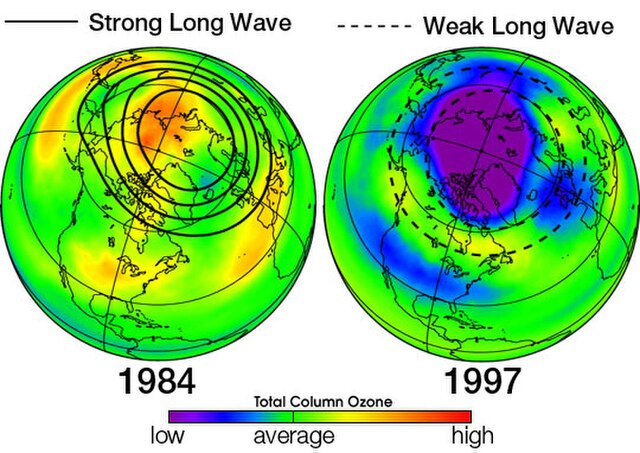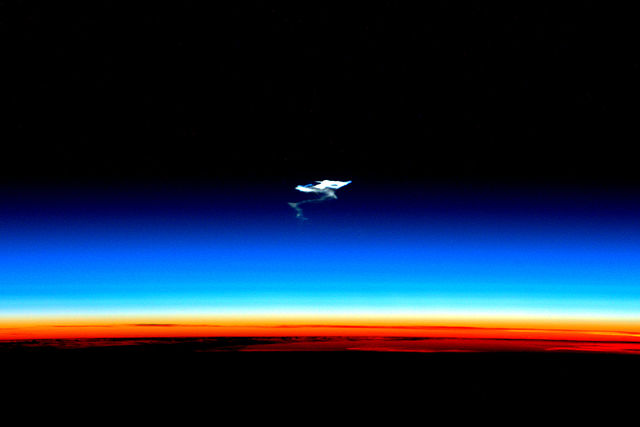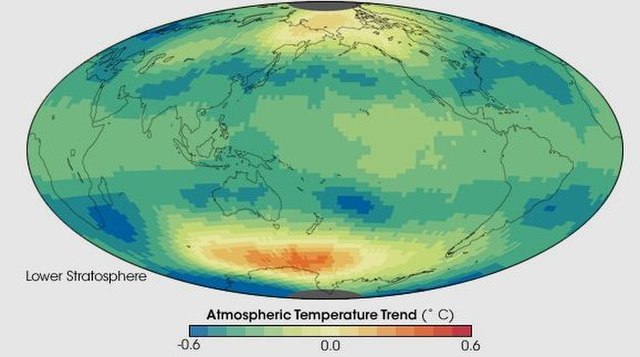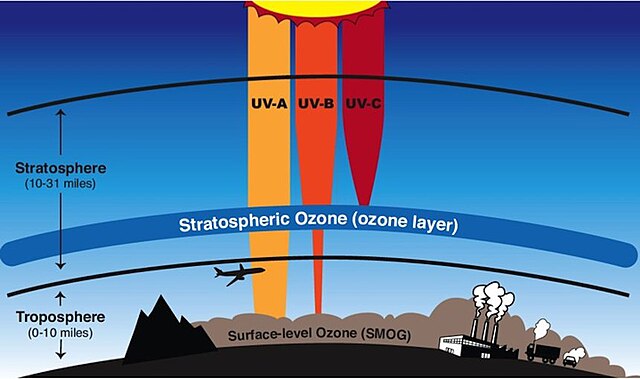Ozone depletion consists of two related events observed since the late 1970s: a steady lowering of about four percent in the total amount of ozone in Earth's atmosphere, and a much larger springtime decrease in stratospheric ozone around Earth's polar regions. The latter phenomenon is referred to as the ozone hole. There are also springtime polar tropospheric ozone depletion events in addition to these stratospheric events.
Lowest value of ozone measured by TOMS each year in the ozone hole
Ozone hole in North America during 1984 (abnormally warm, reducing ozone depletion) and 1997 (abnormally cold, resulting in increased seasonal depletion). Source: NASA
Ozone levels stabilized in the 1990s following the Montreal Protocol, and have started to recover. They are projected to reach pre-1980 levels before 2075.
The stratosphere is the second layer of the atmosphere of Earth, located above the troposphere and below the mesosphere. The stratosphere is an atmospheric layer composed of stratified temperature layers, with the warm layers of air high in the sky and the cool layers of air in the low sky, close to the planetary surface of the Earth. The increase of temperature with altitude is a result of the absorption of the Sun's ultraviolet (UV) radiation by the ozone layer. The temperature inversion is in contrast to the troposphere, and near the Earth's surface, where temperature decreases with altitude.
Afterglow of the troposphere (orange), the stratosphere (blue) and the mesosphere (dark) at which atmospheric entry begins, leaving contrails, such as in this case of a spacecraft reentry.
This image shows the temperature trend in the lower stratosphere as measured by a series of satellite-based instruments between January 1979 and December 2005. The lower stratosphere is centered around 18 kilometers above Earth's surface. The stratosphere image is dominated by blues and greens, which indicates a cooling over time.
The ozone layer in the stratosphere blocks harmful UV radiation from reaching the surface of the Earth. A gamma ray burst would deplete the ozone layer, allowing UV radiation through.
Aircraft typically cruise at the stratosphere to avoid turbulence rampant in the troposphere. The blue beam in this image is the ozone layer, beaming further to the mesosphere. The ozone heats the stratosphere, making conditions stable. The stratosphere is also the altitude limit of jets and weather balloons, as air is roughly a thousand times thinner there than at the troposphere.







